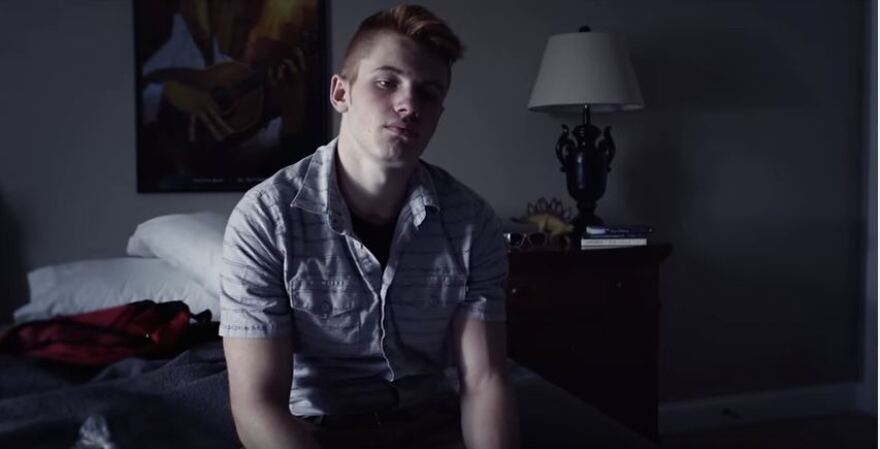The attention-grabbing, anti-heroin Super Bowl advertisements that the National Council on Alcoholism and Drug Abuse – St. Louis ran last year and will again this year star characters that you may not expect: white, suburban kids.
“Heroin is primarily a drug being used in suburbs and rural areas more than urban areas,” said Howard Weissman, the executive director of NCADA. “Drugs of all kind are equal opportunity destroyers and they affect everyone of all social classes, of all color. This particular epidemic is more concentrated on white folks and white folks in suburbs and rural areas and white folks with money.”
That comes as a surprise to many who may remember the last heroin epidemic, which prompted President Richard Nixon’s “War on Drugs” and unfairly targeted black Americans, as many publications have pointed out. The perception of the user as a 28 to 30-year-old urban-dweller persists today, even if the average heroin addict is a white, middle-class teenager, as NPR reported.

That’s prompted some discussion of how we pay attention to drug epidemics today versus the 1970s-1990s. Are people only paying attention to St. Louis’ heroin issue because it is now a white, suburban problem? That’s what one commenter, A.J., brought up in the comments of this story:
“Urban black kids in North St. Louis have been killed or jailed because of the drug-trade since the 1980s, but now we're supposed to care because suburban white kids are using and overdosing?” wrote A.J. in the comments of this story. “In my opinion, these PSAs seem tone deaf to the realities of these illegal markets.”
Weissman said he understands the pain behind comments such as these.
“What that comment is referring to is less about the way we’re treating the heroin epidemic and much more about the way we treated earlier epidemics—the heroin epidemic from the ‘70s and the crack epidemic from the ‘80s and early ‘90s,” Weissman said. “We took a law enforcement approach to those. We arrested people, we broke down doors, we shattered lives...we did not treat it as a public health problem. We treated it as a criminal problem.”
That was a colossal injustice and terribly unfair, said Weissman. Yet, there may be a silver lining in how drug epidemics are approached today.
“The fact that it is happening in the suburbs to white kids and it is happening to white kids whose parents might be senators, physicians or business leaders does something to remove the stigma that addiction has been shrouded in,” Weissman said. “I would like to say there is finally some degree of enlightenment that addiction is a chronic brain disease and needs to be treated that way. I would like to hope this rising tide of enlightenment will lift all ships.”
The local statistics are startling: Deaths caused by heroin and other opiates in the St. Louis region spiked to 445 in 2014. The preliminary count for 2015 is 324, according to NCADA officials.
Weissman said one of the biggest contributors to this recent heroin epidemic has been the over-prescription of opioid pain medication. “Opioid pain medications are essentially heroin,” he said. “They are a couple of molecules away from the heroin you buy on the street.”
Vicodin, Hydrocodone, Oxycodone and Percocet, commonly-prescribed medications for chronic pain, are all synthetic forms of opium or morphine. And obtaining such medicine is easy with a health insurance plan and prescription. You can receive stronger doses of opioids in 80 grams of pain medication for $5-10 at the pharmacy than buying milligrams of it on the street for $1 per milligram, Weissman said.
"Pain has been treated as the fifth vital sign since the 1990s. That’s arguable whether or not that’s really something that needs to be receiving the kind of strong, narcotic, addictive treatment that doctors have been bringing to it."
“There’s too much medication in too many people’s medicine cabinets,” Weissman said. “It is too easily available, too easily misused and too easily diverted. Pain has been treated as the fifth vital sign since the 1990s. That’s arguable whether or not that’s really something that needs to be receiving the kind of strong, narcotic, addictive treatment that doctors have been bringing to it.”
Weissman said that the approach to the Super Bowl ad this year is much different from the jarring, horrifying images and music that had people from the Huffington Post to Ad Week up in arms last year. Weissman said that people who were extremely upset by the commercial were often those who had already been impacted by the “catastrophe” of heroin in their lives—that was not the audience NCADA was trying to reach.
“People were not talking about heroin even though over a person a day was dying,” Weissman said. “We had 407 deaths in 2014 and there wasn’t a lot of coverage about it, which we found outrageous really. Our approach then was ‘we’re going to do whatever it takes’ to get the attention on this issue so that we can start talking about it.’”
Read more about this year’s ad here. Weissman said that by airing the commercial to such a broad audience with the Super Bowl, he hoped it would prompt some teens to join in on a social media campaign to raise awareness of the dangers and opioids. Find out more on Instagram here.
St. Louis on the Air brings you the stories of St. Louis and the people who live, work and create in our region. St. Louis on the Air host Don Marsh and producers Mary Edwards, Alex Heuer and Kelly Moffitt give you the information you need to make informed decisions and stay in touch with our diverse and vibrant St. Louis region.




